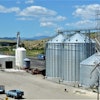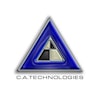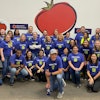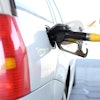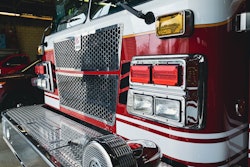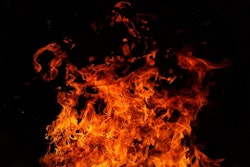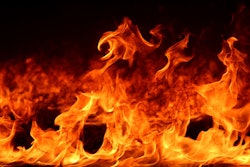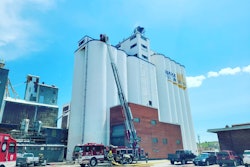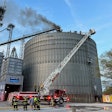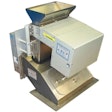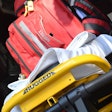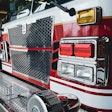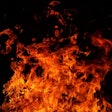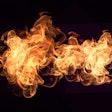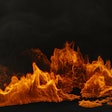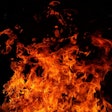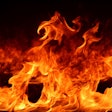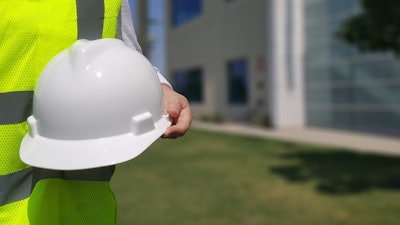
火灾隐患是潜在的情况或conditions where a person or object is at risk of being struck, caught or otherwise affected by a moving object or energy source. The term "line of fire" refers to the path along which a hazard travels.
These hazards are common in various workplaces and can result in injuries or even fatalities if proper precautions are not taken.HSSE WORLDnames line of fire hazards as the second leading cause of workplace fatalities at 27%, just behindslips, trips and falls.
Some common examples of Line of Fire Hazards that will be found at a grain elevator or feed mill include, falling objects, moving machinery, flying particles or debris and vehicle-related hazards.
Mitigate falling object hazards
There’s a good reason most feed and grain facilities require employees and visitors to wear hardhats when walking around. According to the U.S. Bureau of Labor Statistics (BLS), in 2021 there were 227 fatal occupational injuries caused by falling objects. Objects like tools and equipment, feed bags or sacks, machinery components or even spilled grain can fall from elevated surfaces, shelves, or moving equipment and pose a hazard to workers below.
Facility managers, safety staff and employees can mitigate the risk of falling objects with safety measures such as proper storage, securing equipment, regular maintenance checks and ensuring workers wear appropriate personal protective equipment (PPE).
Regular housekeeping to keep work areas clean and organized can also help prevent objects from falling or being knocked over. Workers should be trained to be aware of their surroundings, especially when working in areas where falling objects are a potential hazard.
Moving machinery can cause major injuries
Workers at grain elevators and feed mills are surrounded by moving machinery, and the energy being used to run that equipment can be dangerous when released unexpectedly.
Conveying, mixing and batching, dumping, milling and grinding, bagging and palatizing and most other moving equipment can pose various risks, including entanglement, crushing, and impact injuries to employees. Pinch points -- areas where machinery parts move together, such as gears and rollers -- can grab clothing and trap or crush body parts if an employee becomes caught between them.
To prevent accidents involving moving machinery, it's crucial to implement safety measures such as providing proper training for equipment operators, installing guards and safety devices on machinery, conducting regular maintenance and inspections, andstrictly adhering to lockout/tagout proceduresduring maintenance work. Additionally, workers should be equipped with appropriate personal PPE and be aware of the potential hazards associated with working around moving machinery.
Flying particles and debris are an ever-present danger
During milling, loading and unloading, conveying, cleaning and bagging, the grain will create flying particles or debris that can cause eye injuries, respiratory issues and more.
Usingdust collection systems, providing proper ventilation, enclosing equipment where possible, conducting regular maintenance, using PPE like safety glasses and respirator masks, and ensuring workers are trained in handling materials and equipment safely.
Proper housekeeping practicesare also vital to prevent the accumulation of dust and debris, reducing the potential for airborne hazards in the facility.
Vehicle-related hazards
Workers on foot or operating other vehicles can be at risk for being hit by moving vehicles at feed mills and grain elevators. This becomes especially dangerous during busy times like harvest, where facilities experience more traffic and employees and visitors can easily become distracted.
To reduce the number of vehicle-related hazards, the following safety measures should be implemented:
- Establishing clear traffic management plans and designated pedestrian walkways to separate vehicle and foot traffic.
- Implementing proper training and certification programs for vehicle operators.
- Using warning signs, lights and audible alarms on vehicles to alert pedestrians to their presence.
- Enforcing speed limits and safe driving practices within the facility.
- Conducting regular maintenance and inspections of vehicles to ensure they are in proper working condition.
- Providing PPE for workers, such as high-visibility vests, to enhance visibility and safety.
- Installing mirrors and cameras to eliminate blind spots for drivers.
- Promoting a safety culture that emphasizes the importance of adhering to safety protocols and reporting any unsafe conditions or near-miss incidents.
Prevent line of fire hazards
To prevent line of fire hazards, employers and workers should prioritize safety and follow proper safety procedures, which may include:
- Providing appropriate personal protective equipment (PPE) such as hard hats, safety glasses, gloves, and steel-toed boots.
- Conducting regular safety training and awareness programs.
- Implementing engineering controls to minimize or eliminate hazards.
- Using warning signs and barriers to keep workers away from dangerous areas.
- Establishing clear protocols for equipment operation, maintenance and repair.
- Maintaining a clean and organized work environment to prevent tripping hazards and falling objects.
- Encouraging workers to report unsafe conditions and near misses to address potential hazards proactively.
By identifying and addressing line of fire hazards, workplaces can significantly reduce the risk of injuries and promote a safer working environment for everyone involved.

.jpg?auto=format%2Ccompress&crop=faces&fit=crop&h=48&q=70&w=48)
